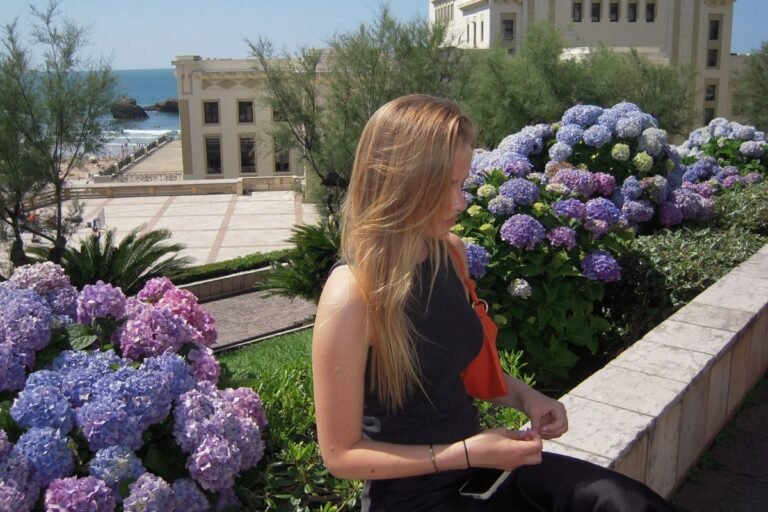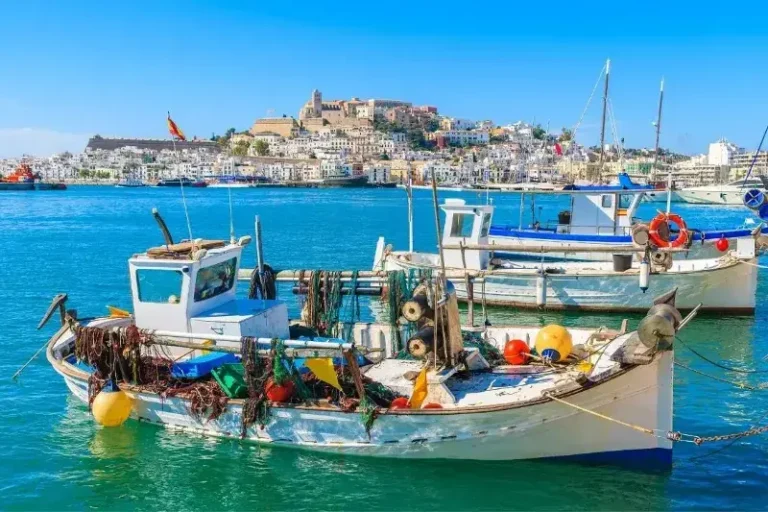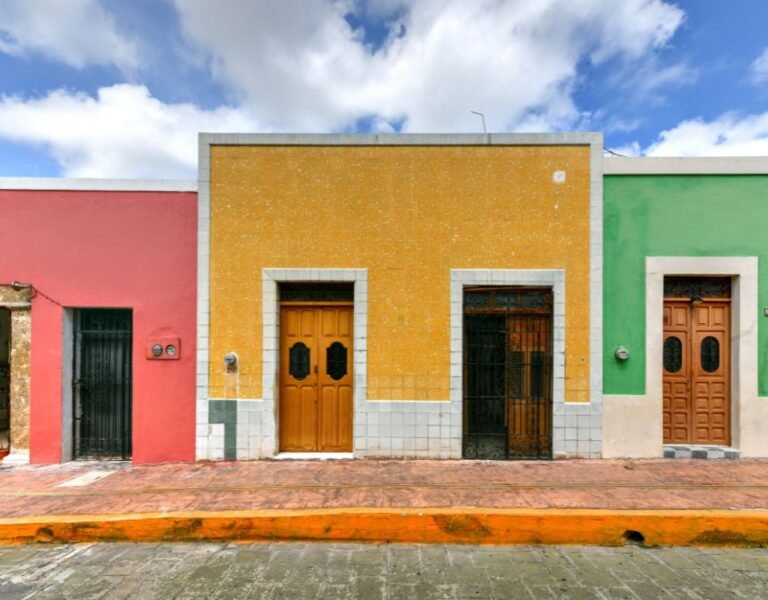An Expat’s Guide To Living In Seville, Spain
|
Seville is the heart and soul of the Andalucía region in southern Spain. It’s a city of immense beauty and a modern hub for those who appreciate southern Spanish living. Seville is roughly 50 miles from the Atlantic Ocean and has served as Spain’s primary commercial river port throughout history.
Tourism is a major industry, and along with Córdoba and Granada, Seville forms the “Moorish Triangle,” showcasing Spain’s rich Moorish history. Seville is not only the capital of Andalucía but also a significant economic center for the region. It plays a crucial role in technology, aerospace, renewable energy, and related research and development industries.
Living in Seville is a very rewarding experience, blending rich culture with a high quality of life. The city’s warm climate, historic charm, and welcoming community create an inviting atmosphere.
Diverse neighborhoods cater to various lifestyles, from traditional to modern. With affordable living options, excellent education, and healthcare facilities, Seville is very family-friendly. Its traditions, festivals, and unique architecture add to its glamor. Let’s dive deeper into what it’s like to live in this beautiful city!
A Brief History Lesson
The city is renowned for its Moorish architecture, bullfighting, flamenco dancing, and vibrant culinary scene. Seville claims the title of the world capital for tapas, those delightful snacks served with drinks in Spanish bars.
Seville’s ambiance reflects its rich past. With just one visit to Patio de los Naranjos, the Gothic cathedral or visiting the Giralda Tower, be sure to get transported way back to Spain’s Moorish past.
Whether you’re captivated by its culturally rich historic districts or the thriving contemporary communities, Seville offers a wide variety of neighborhoods to choose from. With options ranging from budget-friendly rental apartments to the distinctive character of each area, Seville caters to every resident in search of retirement or even a new chapter in life!
Life In Seville
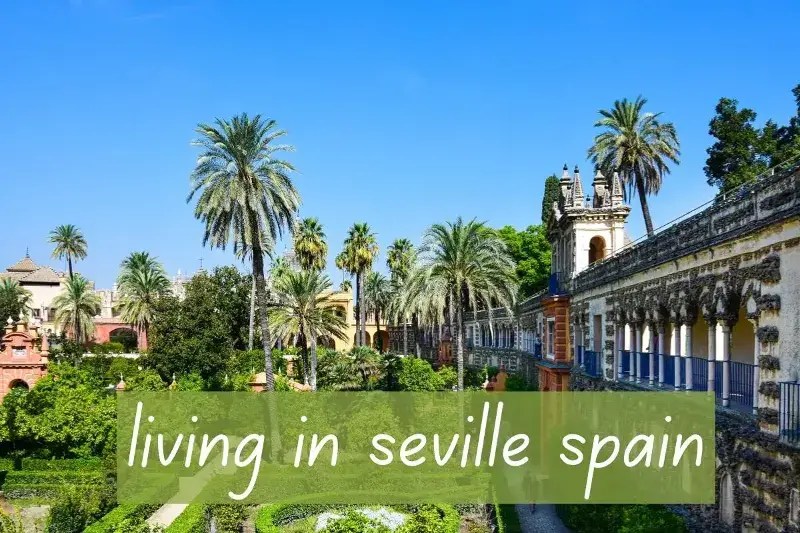
Weather
In Seville, winters are mild, with average highs 60F and lows in the 40F. Summers, particularly in July and August, can see temperatures exceeding 100 F with low humidity. Thus you’ll see houses with thick stone walls and serene central patios, often complemented by fountains and flowers.
From a historical point of view, it used to provide a cool haven from the scorching heat when air conditioning .
Quality of Education
The public education system in Spain is accessible to all children up to 16 years without any charges. However, for non-Spanish-speaking pupils, private schools should be a preferred choice. As an expat, you have the option to enroll your children in schools following either the Spanish or international curriculum.
International schools in Spain are renowned for their quality and often employ experienced international teachers. The most common international schools include American, British, German, and French institutions. Seville is home to three public universities: the Pablo de Olavide University, the University of Seville, and the International University of Andalusia.
The international university, established in 1994, offers undergraduate and postgraduate programs, as well as summer school activities. Additionally, there are numerous language schools and excellent primary and secondary education institutes.
Culture and Leisure
Seville is a hub of lively cultural celebrations, with two standout events that draw visitors from near and far. First, there’s the Semana Santa, a solemn Holy Week observed two weeks before Easter. During this time, intricate processions featuring lifelike wooden religious sculptures fill the streets.
Shortly after Semana Santa comes the Seville Fair, a six-day extravaganza that kicks off two weeks later. The city fills up with colorful tents, where people gather for dancing, conversations, and indulging in tapas.
On a side note, don’t miss the famous “serranito” sandwich, a local favorite. Seville also boasts a reputation for its delicious desserts, including “torrijas” (fried bread with honey) and “roscos frittos” (deep-fried doughnuts coated in sugar). Seville oranges, in high demand during marmalade season, are shipped worldwide.
For art enthusiasts, Seville offers a warm welcome with its old theaters and music scene unlike any other, which adds a harmonious note to the city’s cultural richness.
Transportation
Seville boasts excellent transportation options. Local buses, operated by TUSSAM, connect the city and nearby destinations. Two bus stations, Plaza de Armas and Prado de San Sebastián, serve the city.
Cycling is a popular and cost-effective mode of transport in Seville, with rental options widely available. The city’s roads are cyclist-friendly. The Santa Justa Train Station, managed by Renfe, is the local railway station, connecting Seville to major cities via the high-speed rail network.
San Pablo Airport serves as the local airport, with easy access. It’s the second busiest airport in Andalusia. Seville also offers additional transportation choices, including metro, tram, and walking adding to its classic charm.
Quality of Life
Spain boasts a high quality of life, thanks to its sunny climate, with approximately 320 days of sunshine per year. This encourages outdoor activities, whether by the beach, on terraces, or in the mountains.
The Mediterranean diet and free healthcare system contribute to overall well-being. A laid-back and social atmosphere will perfectly suffice the quality of life for expats in Seville.
Planning a move from America to Spain? Get visa information and expert tips for a smooth transition!
Best Neighborhoods to Live in Seville
Santa Cruz: Seville’s Heart
Santa Cruz stands as one of Seville’s most renowned neighborhoods, at the city’s core. This ancient district, forming much of Seville’s Old Town, offers a timeless experience that will transport you through the ages. Its maze like streets and squares give off an old-world ambiance.
You’ll find a lively community of tapas restaurants and cozy bars along these narrow lanes, and offers a vibrant daytime and nighttime social scene. Santa Cruz was once Seville’s Jewish Quarter and is now home to some of the city’s most famous landmarks.
Among these landmarks is the renowned Seville Cathedral and the Royal Alcázar of Seville. As the epicenter of Seville’s history and culture, Santa Cruz naturally draws crowds of tourists. If you seek a quieter neighborhood to reside in, Santa Cruz might not be the ideal choice.
However, if you want to immerse yourself in the city’s lively atmosphere and cultural heart, it ranks among the best neighborhoods in Seville. Santa Cruz ensures there’s always something happening at the heart of this historic neighborhood.
Alfalfa: Seville’s Hip Historic Hub
Just north of Santa Cruz lies Alfalfa, a neighborhood with a history as rich as its southern counterpart. Alfalfa boasts narrow alleys and ancient streets, reflecting its status as another one of Seville’s oldest districts.
In the middle of Alfalfa, there’s a lively square called Plaza Alfalfa. It’s full of cafes, restaurants, and people having a good time. Alfalfa has other nice squares too, like Plaza del Pan, where you can find cool shops and a hip vibe. Another lovely spot is Plaza del Cristo de Burgos, a green square with trees and a playground for kids.
A famous place in Alfalfa is the Casa de Pilatos, a fancy palace with a mix of Spanish and North African styles. Even though many tourists come here, it’s not as crowded as some other parts of the city, making it a good place to live.
Alfalfa is known for its many restaurants, unique shops, cafes, and boutiques, making it one of the trendiest and liveliest neighborhoods in Seville. Some people even call it “Soho Benita,” and it’s a magnet for artistic and free-spirited folks who love its special vibe.
San Bartolome: A Hidden Gem
San Bartolome is a special place in Seville, but many people don’t know about it. It has a unique history. Long ago, it was part of Seville’s old Jewish area, called la Judería. But in the 20th century, it lost some of its shine.
But things have changed in recent years. San Bartolome has made a comeback and is now one of the best places to live in Seville. It’s close to the city center but still peaceful.
The streets of San Bartolome are charming and lovely. Even though it’s in the middle of the city, there are plenty of green spaces. One of the nicest spots is Plaza de Las Mercedarias, a square with lots of trees and colorful houses.The San Bartolomé Church is the big landmark here. It used to be a synagogue, and its colorful exterior stands out in the neighborhood.
San Bartolome is just right if you want history, green places, and peace and quiet. It’s also good if you’re looking for affordable housing in the heart of Seville, where prices can be high.
El Arenal
El Arenal is a special neighborhood in Seville, located next to the eastern side of the Guadalquivir River. Its name comes from the sandy riverbank it used to be.
In the past, El Arenal was a busy port where ships from the New World arrived. This history left behind some amazing landmarks and well-built houses in the neighborhood.
Every part of El Arenal is full of history and culture, and you’ll find many famous places in Seville here. The Torre del Oro, or Tower of Gold, is a big deal and makes the neighborhood feel regal and historic. Another famous place is La Maestranza Bullring, which is one of the oldest buildings in the city and adds to El Arenal’s unique vibe.
But El Arenal isn’t just about history. It’s a lively place with lots of places to eat and hang out. People love spending time here, especially by the river. That’s why El Arenal has become one of the top places to live in Seville. Housing can be a bit pricey, but many say it’s totally worth it for the experience.
San Vicente- Tranquility By The Riverside
San Vicente sits north of the city center, right by the Guadalquivir River. It’s one of the neighborhoods on the river’s eastern side. This location means you get some amazing river views, and it feels surprisingly open, especially so close to downtown. Not many tourists come here, so it’s like a hidden oasis away from the city’s hustle and bustle.
San Vicente isn’t a typical tourist spot, which makes it perfect if you want a neighborhood that’s all about living. The streets are wide, and the buildings have a charming style. It used to be part of the Moorish new town, so you’ll notice a North African influence in the architecture that adds to its unique Seville character.
One of the cool things about San Vicente is its vibrant market scene, especially the famous El Jueves Street Market. It happens every Thursday and is a fantastic place to buy fresh local stuff and find unique items.
Up in the north part of the neighborhood, you’ll find Alameda de Hércules. It used to be a bit unsafe back in the day but now it’s one of Seville’s best spots for nightlife. So, San Vicente gives you a great residential experience along with lively markets and a touch of nightlife excitement.
Triana- Birthplace of Flamenco
Triana is right there on the west side of the Guadalquivir River, and it’s got a whole different vibe compared to the rest of Seville. It used to be almost like a separate town until they built the famous Triana Bridge.
This neighborhood has a working-class history and a strong tradition of making pottery and tiles. That history helped make Seville famous for a lot of things. One of the biggest is being the birthplace of flamenco, thanks to the Romani community that lived here.
Even today, you can find some of the best flamenco performances in Triana, and that’s why it’s known as Seville’s artistic area. The mix of working-class roots, art, and culture makes Triana a great place for families.
Triana is real and down-to-earth, which is why it keeps attracting visitors and newcomers who want to be part of its close communities, live on its residential streets, and enjoy its lively nightlife. You’ll find some great spots for a night out along Calle Betis, right by the river. And if you’re looking for a budget-friendly place to live in Seville, Triana’s got that charm you’re after.
Encarnacion Regina: Modern Living Amidst History
In the heart of Seville’s inner east district lies Encarnacion Regina, a symbol of modernity in the city. At its core is the Metropol Parasol, a unique wooden structure fondly known as “The Mushrooms.” This architectural wonder, completed in 2011, ranks among the world’s largest wooden structures.
Encarnacion Regina extends its modern vibe around the Metropol Parasol, making it a fantastic residential choice for those seeking something different from traditional Seville. It’s famous for its vibrant shopping scene.
Here you’ll find unique boutique clothing shops, organic food stalls, a natural beauty shop, and craft beer bars. This modern touch in the heart of Seville makes Encarnacion Regina one of the city’s best neighborhoods for those who love contemporary comforts.
Similar to the Alfalfa neighborhood, Encarnacion Regina has a winding pedestrian street known as the Regina Market. Here, you’ll find independent stalls, restaurants, and cafes that add to the neighborhood’s colorful character.
Many homes in Encarnacion Regina belong to students and young professionals who have added their vibrant mark to this diverse neighborhood. It also attracts its fair share of tourists, giving it a dynamic and lively atmosphere.
Nervión: Upscale Living and Soccer Fever
On the eastern side of the city, you’ll discover Nervión, one of Seville’s most prestigious and stylish neighborhoods. It gained fame as the home of the Ramón Sánchez-Pizjuán Stadium, where Sevilla FC plays, and has become a hub for high-end fashion, attracting well-off residents.
As night falls, Nervión turns into a favorite spot for young professionals who love its countless tapas bars, cocktail lounges, and modern restaurants. If you’re a young professional looking for the best neighborhood in Seville, Nervión is a tempting choice.
While Nervión is home to city institutions like sports stadiums and upscale stores, it also boasts green spaces. One of them is Buhaira Gardens, a peaceful escape from the city’s hustle and bustle, with its blooming flowers and lush lawns. During the summer, these gardens come alive with live music events, bringing the neighborhood together on warm summer evenings.
Los Remedios: A Traditional Haven
Los Remedios, stretching along the western riverbanks, is a cherished and traditional neighborhood in the region. Much like its neighbor Triana, Los Remedios has cultivated a unique identity, distinct from the inner-city areas on the eastern side of the Guadalquivir River.
In stark contrast to the intricate streets of the inner city, Los Remedios was the first planned neighborhood, developed in the 1960s. Its straight, orderly streets and open-air atmosphere make it an excellent residential option in Seville. Here, you can savor the rich character of Triana and old-town Seville while enjoying the orderliness and peace of a planned neighborhood.
Los Remedios strikes a perfect balance, offering Seville’s vibrant culture with its flamenco bars and artistic performances. All alongside the suburban charm of its well-structured, straight-line layout.
Macarena: A Creative Hub
The Macarena neighborhood in Seville has a cool and artistic atmosphere, drawing in many artists, writers, and performers. It’s located in the north of Seville and is well-connected to the rest of the city by bus.
In Macarena, artists and performers often gather for workshops and entertainment in shared courtyards, making it a lively and creative place to live.
One of its highlights is El Jueves, the oldest flea market in Seville, held every Tuesday. Additionally, there’s a food market on Calle Feria offering fresh fruits, vegetables, and artisan pastries, perfect for food enthusiasts.
The neighborhood boasts the Basílica de la Macarena, a neo-Baroque church from 1949 open to both locals and tourists.
Macarena is also family-friendly, with kindergartens, preschools, nurseries, and language schools, making it an excellent choice for families. It’s home to some major hospitals, such as Hospital de Las Cinco Llagas and Hospital Universitario Virgen Macarena, ensuring residents have easy access to healthcare.
While Macarena is predominantly inhabited by locals and families, it has been gaining popularity among international artists and young professionals, as many houses have been recently remodeled to cater to their needs, adding an international touch to the artistic atmosphere.
Must-See Historic Landmarks in Seville
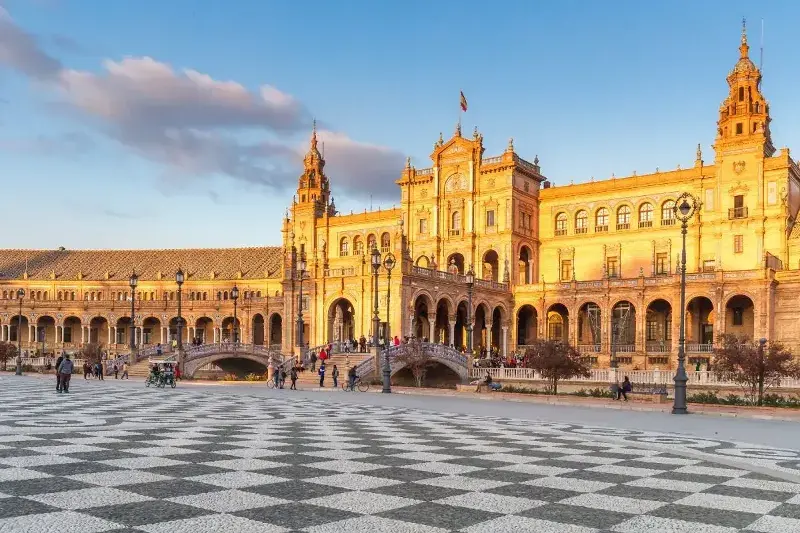
Royal Alcázar Palace
The Royal Alcázar Palace, dates back to the 14th century and is still used by the Spanish royal family. This UNESCO World Heritage site showcases late Medieval Moorish architecture with Gothic and Renaissance influences.
Don’t miss the enchanting gardens, and make sure to explore below the palace to discover the underground pool known as “The Baths of Lady María de Padilla”. To skip long lines, book tickets online in advance or join a guided tour. Try and align your visit during summer concerts in the gardens.
Seville Cathedral
The Seville Cathedral is a colossal masterpiece, earning its place as the world’s largest Gothic cathedral. With 80 chapels, a treasury, Christopher Columbus’s tomb, and a 343-foot tower that has to be on your bucket list. A Rooftop Tour would be perfect to get a unique perspective on its construction. You can order tickets online in advance and entrance is free for religious services.
Palacio de Las Dueñas
The 14th century Palacio de Las Dueñas, once home to Spain’s wealthiest noble, offers a glimpse into a legendary life. Here you’ll find a museum filled with art, cultural treasures, and mementos of the Duquesa of Alba’s remarkable existence.
Conclusion
Living in Seville offers a unique mixture of rich heritage, vibrant neighborhoods, and a high quality of life. Whether you prefer the historic charm of Santa Cruz or the artistic vibes of Macarena, Seville has something to offer for everyone.
In Seville, tradition seamlessly merges with modernity, creating a dynamic and vibrant living experience. Whether you’re an expatriate seeking adventure or a local looking to settle down, Seville’s diverse neighborhoods and rich culture make it a truly exceptional place to live.
Hello and Welcome!

We started our family travel blog in hopes of supporting other families move abroad and travel the world. Through straightforward, sincere and supportive information we hope to provide a reliable guide for those moving overseas with a family and traveling the globe.



